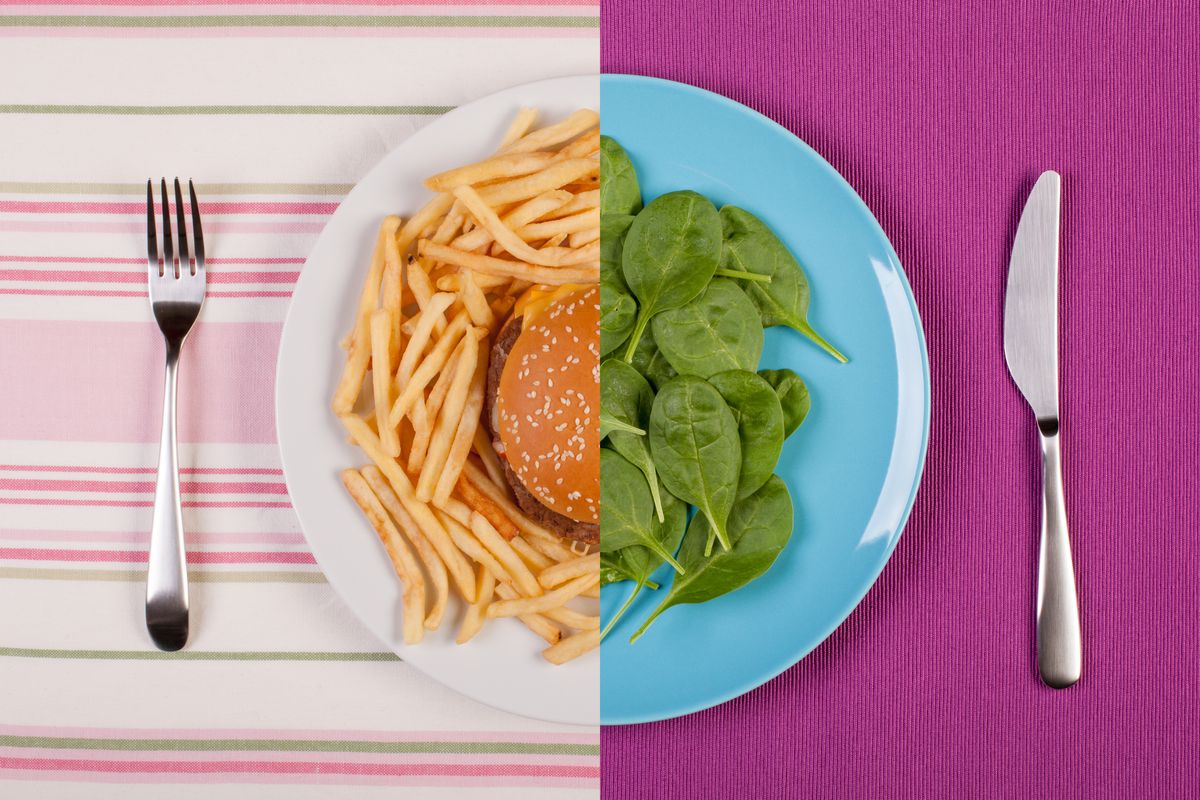Food
Dissociated diet: how it works and what are its benefits

The dissociated diet for weight loss is excellent; it also improves digestion and overall health. Let’s see how it works.
The dissociated diet is a diet in which the main nutrients, namely proteins, carbohydrates and fats, are taken separately. This should allow the intestines to digest and assimilate nutrients better. In addition to promoting general well-being, it should also help you lose weight more easily. Let’s see how it works!
Dissociated diet: does it work? that’s how
The dissociated diet is based on very specific rules. First of all, carbohydrates must be consumed in the first part of the day, until lunch , which is the most important and abundant meal. For dinner , on the other hand, you have to eat proteins . Both lunch carbohydrates and dinner proteins must always be accompanied by a portion of vegetables.

You should never eat carbohydrates and proteins in the same meal , nor different types of proteins (no meat and dairy products or meat and legumes, for example). Carbohydrates should not be associated with sugars. After meals, never eat sweets and fruit, which must be consumed at other times of the day. Finally, we must limit the consumption of fats and starches.
The thing that allows the body to lose weight is the limited intake of nutrients , which must be dissociated but always in limited quantities.
There is no scientific evidence on whether it works or not, but some scientific studies indicate that not having freedom of choice on certain types of food leads to weight loss. It must be taken into account, then, that this theory that led to the diet was developed in the 1930s by Dr. William Howard Hay , and therefore was not based on modern scientific knowledge.
What to eat in the dissociated diet
The foods allowed in the dissociated diet are: fruit and vegetables, wholemeal bread and pasta, low protein (preferably lean), low fat and low starch.
After all, it is a varied diet, the focus is mainly on which foods to eat at the same time and when to eat them.
Examples of dissociated diet: typical menu
To have a personalized menu, suited to your needs, we suggest you contact a nutritionist . In any case, below we present an example menu:
First day
Breakfast: fresh fruit, low-fat yogurt, coffee or green tea
Lunch: wholemeal pasta with fresh tomatoes
Dinner: baked fish with a side of vegetables
Snacks: fresh fruit
Second day
Breakfast: fresh fruit, skim milk, coffee or green tea
Lunch: Brown rice with mixed vegetables
Dinner: Grilled chicken breast with salad
Snacks: fresh fruit
Third day
Breakfast: fresh fruit, skim milk, coffee or tea
Lunch: wholemeal pasta with tomato sauce
Dinner: legume and vegetable soup
Snacks: fresh fruit
Fourth day
Breakfast: fresh fruit, yogurt, coffee or tea
Lunch: wholemeal pasta with mixed vegetables
Dinner: low-fat cheese with vegetables
Snacks: fresh fruit
Fifth day
Breakfast: fruit smoothie
Lunch: saffron risotto
Dinner: Chicken breast with vegetables
Snacks: fresh fruit
Sixth day
Breakfast: fruit, low-fat yogurt, and coffee or tea
Lunch: wholemeal pasta with vegetables
Dinner: blue fish with salad
Snacks: fresh fruit
Seventh day
Breakfast: fresh fruit, skim milk and coffee
Lunch: brown rice with vegetables
Dinner: a boiled egg with vegetables
Snacks: fresh fruit
Dissociated diet: contraindications
The dissociated diet has no major drawbacks, other than being rather monotonous . It is not suitable for those with diabetes, children, pregnant and lactating women.
In any case, before starting this type of diet, it is always better to consult a doctor.
Riproduzione riservata © - WT











